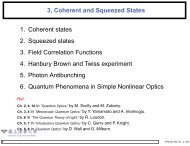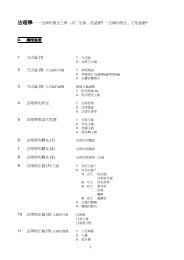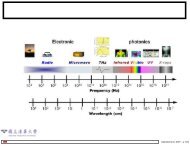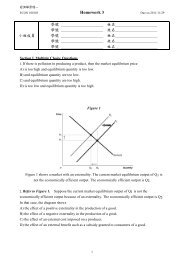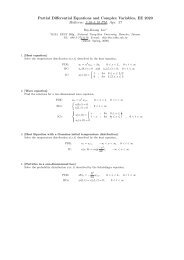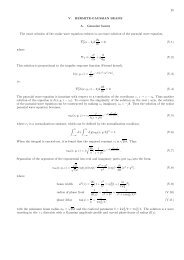Acceleration, Shock and Vibration Sensors
Acceleration, Shock and Vibration Sensors
Acceleration, Shock and Vibration Sensors
Create successful ePaper yourself
Turn your PDF publications into a flip-book with our unique Google optimized e-Paper software.
<strong>Acceleration</strong>, <strong>Shock</strong> <strong>and</strong> <strong>Vibration</strong> <strong>Sensors</strong><br />
A built-in electronic circuit is required for proper operation of a capacitive accelerometer.<br />
In the simplest sense, the built-in circuit serves two primary functions:<br />
(1) allow changes in capacitance to be useful for measuring both static <strong>and</strong> dynamic<br />
events, <strong>and</strong> (2) convert this change into a useful voltage signal compatible with<br />
readout instrumentation.<br />
A representative circuit is shown<br />
in Figure 5.2.13 <strong>and</strong> Figure 5.2.14,<br />
which graphically depicts operation<br />
in the time domain, resulting from<br />
static measur<strong>and</strong> input.<br />
The following explanation starts<br />
from the beginning of the circuit <strong>and</strong><br />
Circuit Schematic<br />
continues through to the output, <strong>and</strong><br />
describes the operation of the circuit.<br />
To begin, the supply voltage is routed<br />
through a voltage regulator, which<br />
provides a regulated dc voltage to the<br />
circuit. The device assures “clean”<br />
power for operating the internal<br />
circuitry <strong>and</strong> fixes the amplitude of<br />
a built-in oscillator, which typically<br />
operates at >1 MHz. By keeping the<br />
amplitude of the oscillator signal<br />
Response from Circuit due to applied +1g Static <strong>Acceleration</strong><br />
(x-axis = time <strong>and</strong> y-axis = voltage)<br />
Figures 5.2.13 <strong>and</strong> 5.2.14: Operation of builtin<br />
circuit for capacitive accelerometer.<br />
constant, the output sensitivity of the device becomes fixed <strong>and</strong> independent of the<br />
supply voltage. Next, the oscillator signal is directed into the capacitance-bridge as<br />
indicated by Point 1 in Figure 5.2.13. It then splits <strong>and</strong> passes through each arm of the<br />
bridge, which each act as divider networks. The divider networks cause the oscillator<br />
signal to vary in direct proportion to the change in capacitance in C 2 <strong>and</strong> C 4. (C 2 <strong>and</strong><br />
C 4 electrically represent the mechanical sensing element.) The resulting amplitudemodulated<br />
signals appear at Points 2 <strong>and</strong> 3. Finally, to “demodulate” these signals,<br />
they are passed through individual rectification/peak-picking networks at Points 4 <strong>and</strong><br />
5, <strong>and</strong> then summed together at Point 6. The result is an electrical signal proportional<br />
to the physical input.<br />
It would be sufficient to complete the circuit at this point; however, additional features<br />
are often added to enhance its performance. In this case, a “st<strong>and</strong>ardization” ampli-<br />
147








